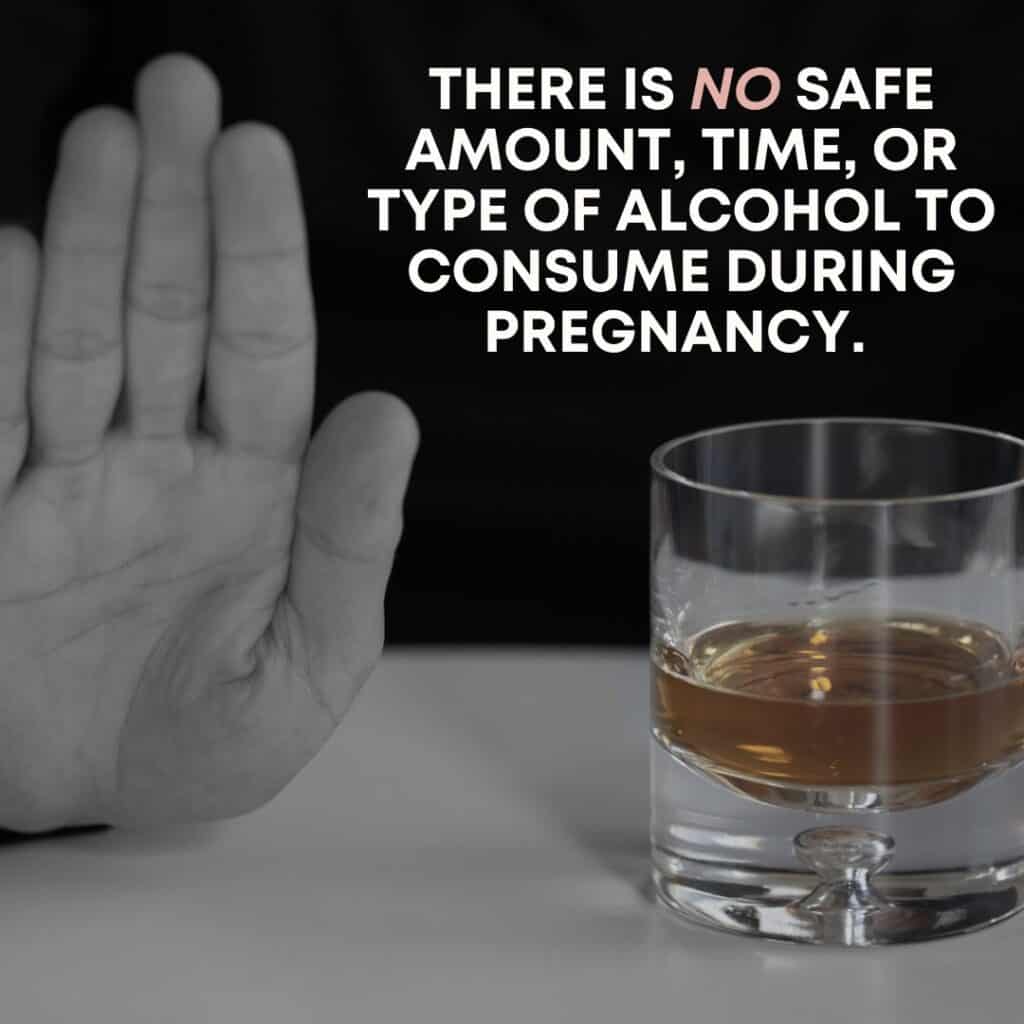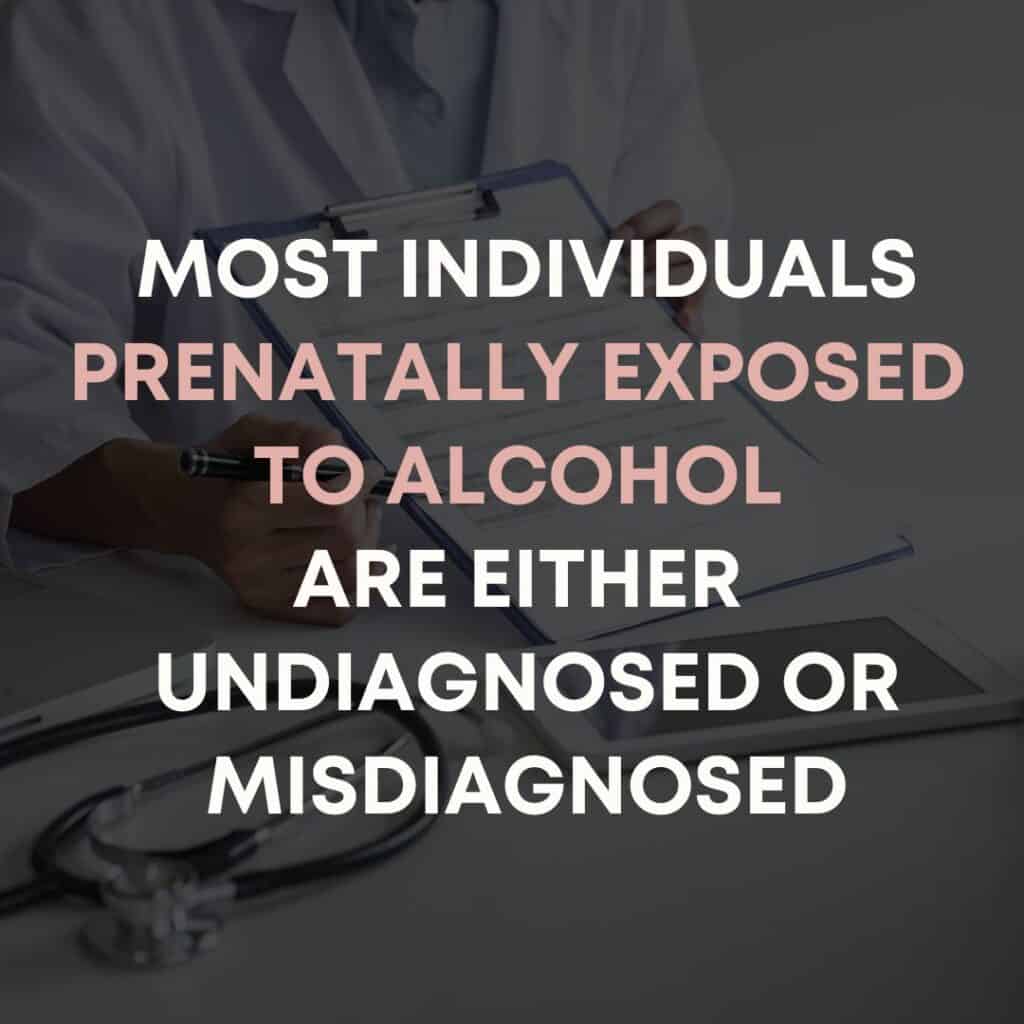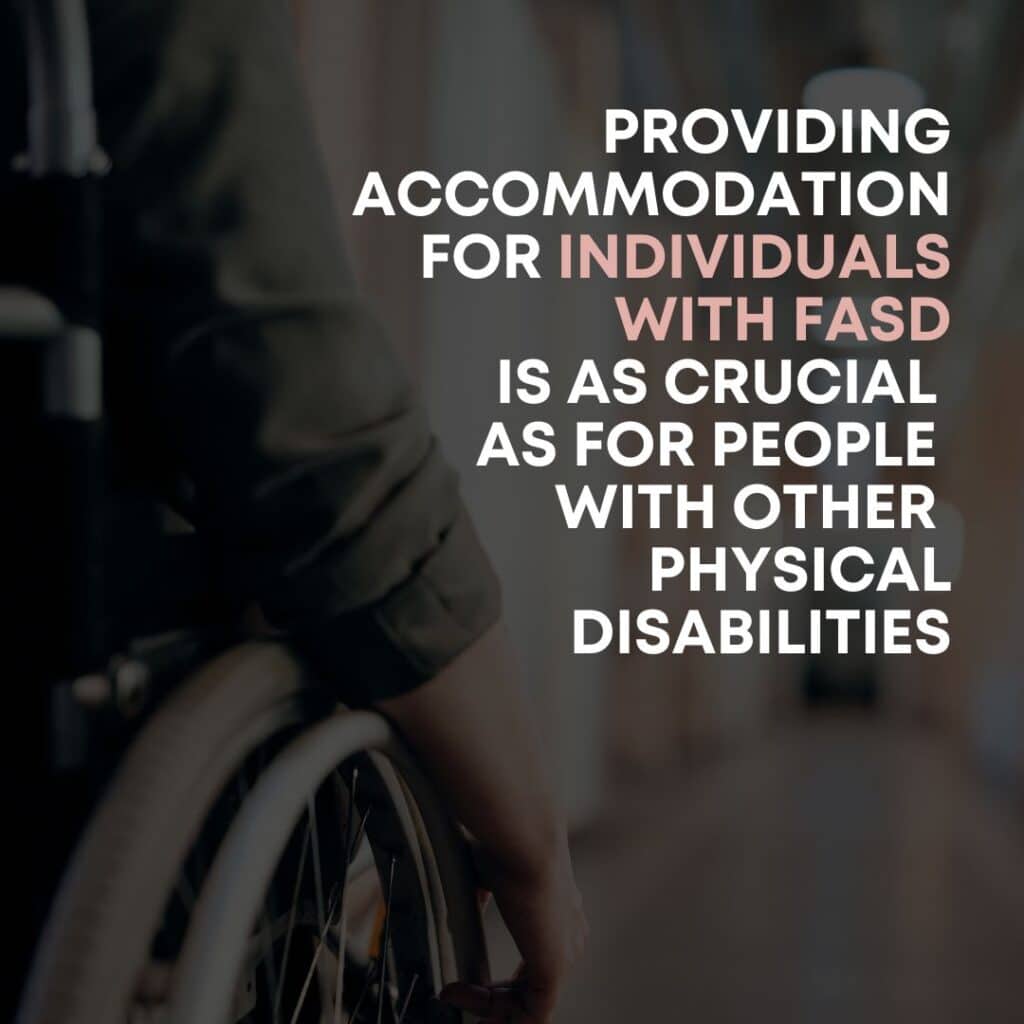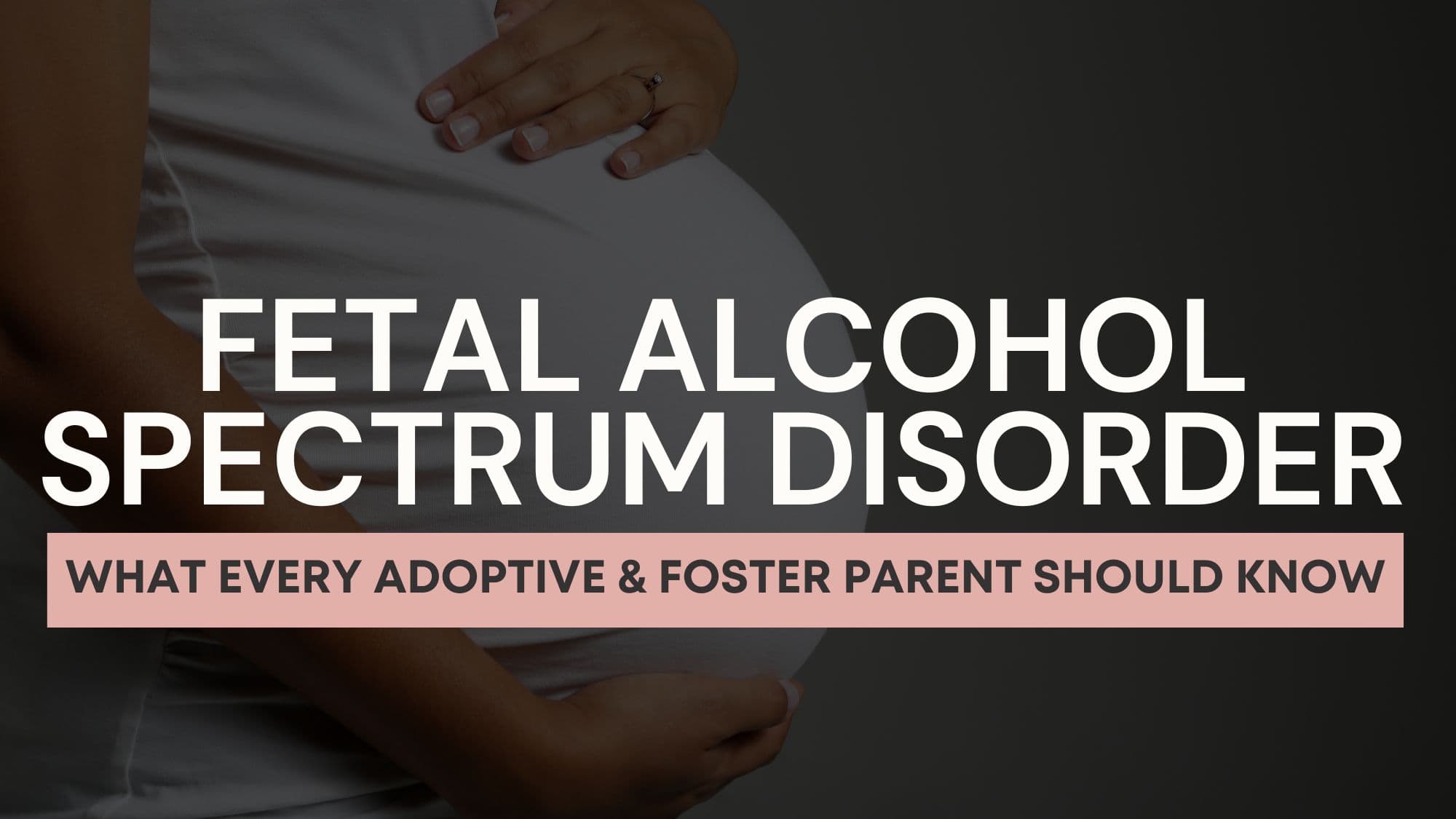What Are We Missing, and Is It FASD?
Foster and adoptive parents open our hearts and homes to vulnerable children for many different reasons. Often we are led by our faith, believing we are to care for the orphan (James 1:27) and that God sets the lonely in families (Psalm 68:6). Regardless of how or why our children came into our family, parents and caregivers quickly come face-to-face with childhood trauma and the resulting big behaviors. One of many issues parents may face is a diagnosis of Fetal Alcohol Spectrum Disorder (FASD).
Parents and caregivers are required to complete training to become licensed foster parents or to adopt. For many, continued training is required to maintain a foster license. However, we still find ourselves overwhelmed by the challenging behaviors exhibited by the children in our care.
Desperate adoptive and foster parents seeking help often discover vital trauma-informed resources. While these connected parenting practices do prove helpful, frustrated parents and caregivers often feel as if they’ve tried everything, but their family is still struggling.
Parents and caregivers might be missing an understanding of Fetal Alcohol Spectrum Disorder. FASD is more prevalent than most people realize but is sorely misdiagnosed or undiagnosed. Regardless, FASD is most likely the missing piece adoptive and foster parents are searching for. While FASD is present among the general population of United States kids, there is a disproportionate number of prenatally exposed children in the foster care system and those in adoptive placements.
In this article, we will unpack FASD. First, we will understand the impact of alcohol exposure on a developing fetus and the resulting symptoms and characteristics of FASD. Second, we will explore a brain-based approach of applying accommodations and supports for children prenatally exposed to alcohol.
What is FASD?
According to FASD United—the national voice on Fetal Alcohol Spectrum Disorders—FASD is an umbrella term describing the range of effects that can occur when an individual is prenatally exposed to alcohol. These effects may include physical, mental, behavioral, and/or learning disabilities with lifelong implications. The term FASD is not intended for use as a clinical diagnosis.
Four diagnoses under the umbrella term of Fetal Alcohol Spectrum Disorder are:
-
- Fetal Alcohol Syndrome (FAS)
-
- Partial Fetal Alcohol Syndrome (pFAS)
-
- Alcohol-Related Neurobehavioral Disorder (ARND)
-
- Neurobehavioral Disorder Associated with Prenatal Alcohol Exposure (ND-PAE)
For a full breakdown of the diagnostic criteria for each umbrella term, click here.
How Does FASD Occur?

FASD occurs when a developing baby is exposed to alcohol in the womb. Research indicates there is no safe amount, time, or type of alcohol to consume during pregnancy.
Alcohol is a teratogen—an agent which causes malformation of an embryo. When a baby is exposed to alcohol in the womb, the toxin alters and kills cells. The structure and function of the developing brain are affected when alcohol is consumed prenatally.
Contrary to popular assumption, FASD does not just affect children born to alcoholic mothers. Most women discover they’re pregnant between four to seven weeks gestation. The baby’s central nervous system (brain and spinal cord), limbs, and facial features are forming during this crucial time. The developing baby can be affected if an expectant mom only drinks socially during this crucial time.

Symptoms of FASD
FASD is an invisible brain-based condition with behavioral symptoms. Not everyone prenatally exposed to alcohol will exhibit all the symptoms and, other than the facial features accompanying FAS, the symptoms are not unique to FASD.
As a facilitator of the FASCETS Neurobehavioral Model, I will utilize this model to unpack the symptoms of FASD.
Before we dive into the primary, secondary, and tertiary characteristics, it’s important to note the facial features associated with FASD—smooth philtrum, thin upper lip, small palpebral fissures (horizontal eye opening)—occur only in a small percentage of the population. Alcohol exposure would have to occur during days 15-18 of gestation for the anomalies to be present. The vast majority of prenatally exposed individuals will not exhibit the facial features making them more at risk for misdiagnosis and ultimately poor outcomes since their disability is virtually invisible.
Primary Symptoms and Definitions
-
- Dysmaturity
-
- Nutrition Problems
-
- Slower Processing Pace
-
- Abstract Thinking Difficulties
-
- Sensory System Challenges
-
- Language & Communication Problems
-
- Learning & Memory Difficulties
-
- Executive Function Deficits
-
- Strengths
Dysmaturity
Dysmaturity refers to a person’s developmental level of functioning. People with FASD often present much younger developmentally than their chronological age.
Nutrition Problems
Nutrition problems can range from a person wanting to eat often because they don’t recognize they’re full to not eating enough because they don’t recognize hunger. Intense sugar cravings are also quite common.
Slower Processing Pace
Individuals with a slower processing pace tend to respond slowly to auditory input. When asked a question, they might respond, “What?” or “I don’t know,” then moments later offer an answer. Their brain needs extra time to think and respond. These individuals often miss much of what was said when presented with a barrage of verbal words or multistep instructions.
Abstract Concepts
Abstract concepts are intangible thoughts and concepts such as understanding and managing time and money. People with an FASD tend to be concrete thinkers and have difficulty grasping these important life skills.
Sensory Systems Challenges
Sensory systems challenges can present as high sensitivity to lights, sounds, or smells. These individuals can be easily over-stimulated and have trouble falling or staying asleep. Either over-sensitivity or under-sensitivity to touch is quite common.
Language and Communication
Language and communication are challenging as the individual often talks better than they understand. They struggle with reading body language and can have trouble articulating their own feelings or comprehending the feelings of others.
Learning and Memory Difficulties
These individuals struggle with learning and memory difficulties. Multi-tasking is difficult, and they may only remember one step out of multiple-step directions. They need to be retaught repeatedly and often have trouble learning from past experiences.
Executive Function
Executive function is the set of skills responsible for organizing, planning, transitioning, focusing, generalizing, and controlling impulses. This “boss of the brain” is highly impacted by prenatal exposure to alcohol.
In her book Trying Differently Rather Than Harder, author Diane Malbin, M.S.W., includes strengths as a primary characteristic. Individuals with FASD are reminded daily of their deficits, but encouraging their strengths can help improve their self-esteem. God created each person with unique gifts and talents—including people with developmental disabilities.

Secondary Symptoms of FASD
When FASD is not understood, is undiagnosed or misdiagnosed, and primary characteristics go unrecognized (or viewed as willful disobedience)—the individual suffers. They experience feelings of frustration and failure because they can’t meet the expectations placed upon them. Over time, the stress caused by trying to force a round peg into a square hole can lead to secondary behavioral symptoms.
Secondary Behavioral Symptoms:
-
- Frustration
-
- Short fuse
-
- Anxiety
-
- Agitation
-
- Withdrawn
-
- Isolation
-
- Depression
These defensive behaviors can develop when there is a gap between what the individual is expected to do and what they are able to do. These symptoms are not exclusive to FASD, but if an underlying brain-based condition is unknown (invisible) and therefore unsupported, then these visible behaviors could be the result.
Tertiary Symptoms of FASD
If, over time, primary characteristics and secondary symptoms are not understood, supported, or accommodated, tertiary symptoms can occur. These symptoms are the net result of a chronic poor fit as the individual struggles with ongoing feelings of failure, isolation, and alienation.
Tertiary Symptoms:
-
- Trouble in school
-
- Social Services involvement
-
- Justice System involvement
-
- Homelessness
-
- Addictions
-
- Mental Health issues
-
- Suicide
However, if the individual is adequately supported, negative outcomes can be avoided or reduced. Focusing on the person’s strengths and learning style while encouraging and incorporating their interests across environments can bolster their self-esteem and increase motivation. At the same time, areas where the individual struggles (see Primary Characteristics) must be accommodated just as accommodations would be implemented for anyone with a visible disability.
Secondary and Tertiary Symptoms are not guaranteed consequences. Accurate identification and strengths-based accommodations can prevent, reduce, or resolve these outcomes.
Overlapping Diagnosis
Individuals prenatally exposed to alcohol often carry an alphabet soup of diagnoses, such as:
-
- ODD – Oppositional defiant disorder
-
- PTSD – Post-traumatic stress disorder
-
- LD – learning disabled
Most prenatally exposed children have an ADHD diagnosis. Because FASD is invisible with behavioral symptoms, the behaviors often lead to an ODD diagnosis. A vast number of adopted and foster children have undiagnosed FASD, but all have experienced trauma, and many struggle with attachment issues leading to PTSD and/or RAD diagnoses. There is a 100% overlap between the neurobehavioral symptoms of Autism and FASD with executive function and social skills being the main differences. And learning challenges due to the primary symptoms of FASD mentioned above could explain the LD label.
While some or all of these brain-based conditions could be accurate, the fragmented pieces may more clearly come together through the lens of FASD.
Why Is It Difficult To Get an FASD Diagnosis?

As mentioned above, a majority of individuals prenatally exposed to alcohol are either undiagnosed or misdiagnosed. Why are medical providers not diagnosing this leading preventable developmental disability?
Dr. Christie Petrenko, Ph.D. Research Associate Professor and Director of Clinical Training, Dept. of Psychology, at Hope Family Center—an affiliate of the University of Rochester in NY—points to the lack of training. “The biggest challenge is that there are so few providers who feel competent to make this diagnosis. Providers don’t routinely get training in FASD as part of their professional education. Stigma and general community awareness of FASD are major barriers to change,” states Petrenko.
In addition to the lack of FASD education in medical school and residency, Dr. Douglas Waite, MD, FAAP of Developmental/Behavioral Pediatrics at BronxCare Health System, Bronx, NY, points to the following:
-
- Past emphasis on the need for a multi-disciplinary team to diagnose FASD. These teams tend to be federally funded and are few in number nationwide.
-
- Need for documentation of prenatal alcohol exposure for all FASDs other than FAS.
-
- Stigma associated with alcohol use during pregnancy and reluctance of women to disclose alcohol use during pregnancy.
-
- Fear of stigmatizing a child by an FASD diagnosis.
Why Is an FASD Diagnosis Important?
Dr. Petrenko states, “An FASD diagnosis offers understanding of complex symptoms often misunderstood and ineffectively treated. It helps individuals with FASD and their families connect with others with lived experiences and provides new ideas for supports and services. Research also shows diagnosis, especially early, can help reduce adverse outcomes, including placement breakdowns, trouble with the law, confinement in mental health or justice system settings, and substance use. Importantly, individuals with FASD share that a diagnosis provides them relief and an understanding of their strengths and needs. It helps them become more effective self-advocates and improves their quality of life.”
Whether or not a child has an FASD diagnosis, applying a brain-based approach to accommodations and supports at home and school will improve daily living. It can also prevent or reduce negative secondary and tertiary outcomes.
FASD as a Whole-Body Diagnosis
There is a lack of research on the long-term physical effects of prenatal alcohol exposure. However, the article Comorbidity of Fetal Alcohol Spectrum Disorder: A Systematic and Meta-Analysis published in The Lancet reports a higher prevalence of almost every health issue among the FASD population compared to the general population, including:
-
- Congenital disorders
-
- Cardiovascular
-
- Musculoskeletal
-
- Dental and oral health
-
- Vision and hearing
The study’s results indicate the adverse effects of prenatal alcohol exposure on individuals across their lifespan. This is another reason why an FASD diagnosis is essential.
FASD as a Developmental Disability
While in a general sense, Fetal Alcohol Spectrum Disorder is recognized federally as a developmental disability, according to Susan Shepard Carlson, Board Chair of FASD United, recognition has not trickled down to the states. “Contrast this with other disabilities, namely Autism and we can see a clear path to broader recognition. With the passage of Autism CARES act in 2014 and increases in funding in 2019, states received more guidance and funding to better support Autism as a covered waiver condition. No such legislation has been passed to date for FASD, leaving states without adequate funding or impetus to address it. Add to that, programs on FASD have only focused on research and prevention without any substantive programs mandated to support people living with this disability.”
While some states do mention FASD in disability services, the barrier exists with IQ requirements. Carlson reported, “Most people with FASD have an average to above average IQ, their disability lies in adaptive function—their ability to navigate the world and their community safely. States that rely heavily on IQ as a determine for FASD services create a barrier for those with FASD who still require supports and services.”
There is a national effort led by FASD United, its affiliate members, along with individuals with FASD and their families to pass federal legislation. The FASD Respect Act is legislation targeting services and recognition on a federal level. This bill, if passed, would provide funding to states to begin addressing FASD and supporting the people living with it.
Difficulty Obtaining Services for Individuals with FASD
While there are programs that can support people with Fetal Alcohol Spectrum Disorder, they are not broadly in use in all states. Susan Shepard Carlson said, “…program supports and services that work with other disabilities may not be as effective with the FASD population.” Diagnostic capacity and awareness are true barriers to services, leaving individuals with FASD and their families to advocate for supports and services.
Carlson added, “To support families and to begin addressing FASD, we need to balance our efforts at prevention with open conversations about FASD and the needs of people living with it. Without policy change on the federal level, states will continue to do as they have been for the last fifty years and will not address FASD in a meaningful way.”
Hope for Individuals With FASD and Their Families
Despite the symptoms of FASD, the prominence of this invisible disability, and the lack of diagnoses and supports, there is hope for struggling children and families.
Individuals with FASD who receive strengths-based accommodations and supports—at home, school, and on the job—can lead successful lives. Many are employed as welders, construction workers, insurance claims investigators, and restaurant managers. Some become entrepreneurs. Some graduate college. Others get married and have families. There is no limit to what a person with FASD can achieve.
People with FASD can accomplish anything neuro-typical individuals can; they just require accommodations and the freedom to pursue their strengths to become all God created them to be. Parents and caregivers who are FASD-informed and equipped with brain-based parenting skills like the FASCETS Neurobehavioral Model are key to their child’s success.
Homeschooling as an Accommodation
It is quite common for children with an FASD to thrive in the homeschool environment. In my personal experience, homeschooling can be an effective accommodation for a child struggling in school either academically, socially, or both. Home education allows the child to work at their own pace. When the child’s learning style, strengths, and interests are taken into consideration, they often flourish.
Whether the child is homeschooled or in school, they often require supports and services. Parents and caregivers should advocate for an IEP or 504 plan and ensure it is followed. My teenage son was homeschooled during elementary school. In junior high, he attended a public school special education classroom. He is homeschooled and attends a public school skills class as a high schooler. Throughout his education, he has had an IEP and receives speech therapy services at school.
A child’s learning style, strengths, and primary symptoms should always be considered. Parents and caregivers must advocate for and pursue schooling that best fits their child. While homeschooling a child with a brain-based disability may seem daunting, it is possible. Homeschooling can be an effective and enjoyable accommodation for both parent and child when a brain-based approach is utilized.
A Brain-Based Approach

Now we will explore a brain-based approach of applying accommodations and supports across systems for children prenatally exposed to alcohol.
We’ve already established that Fetal Alcohol Spectrum Disorder is an invisible brain-based physical disability with behavioral symptoms. Therefore, providing accommodations for individuals with FASD is as crucial as for people with other physical disabilities.
For example, when we see a person in a wheelchair, we understand they will need accommodations. Environments are equipped to accommodate a wheelchair user—ramps, removal of curbs, marked parking spaces, elevators, and modified restrooms.
Utilizing the FASCETS Neurobehavioral Model, we will consider how to apply person-specific accommodations for people with FASD.
A task almost every parent or caregiver expects a child to do is clean their room. However, especially if your child was prenatally exposed to alcohol, there’s a good chance this is a source of contention in your household. Let’s consider what anyone’s brain would have to do to clean a room:
-
- plan
-
- organize
-
- remember
-
- make decisions
-
- prioritize
-
- stay on task
-
- filter distractions
-
- manage sensory input
Considering the primary Symptoms of Fetal Alcohol Spectrum Disorder stated earlier, each brain task necessary for cleaning a room will be difficult for a person exposed to alcohol in the womb.
Accommodations
Let’s consider what accommodations might be implemented to help a child accomplish the expected task of cleaning their room.
First, remember the primary Symptoms the child may struggle with. Let’s imagine a child who has difficulty planning, organizing, making decisions, and staying on task.
Second, we must take into consideration the child’s developmental age. If the child is twelve chronologically but presents more like six developmentally, we set our expectations according to their developmental age. In other words, we change our expectations to match what a six-year-old can do.
Next, consider the child’s strengths. What are they good at? Maybe this particular child is social and loves music. We will factor in these two strengths when deciding on accommodations.
Since this child is social and performs better with one-on-one support, work together to co-clean the room. Due to their challenges with planning, organizing, decision-making, and staying on task, a parent or caregiver can provide guided support. Help them figure out where to start, what to do next, etc. Choices can be offered (what do you want to pick up first, the dirty laundry or the toys?). If making that decision is too overwhelming for the child, decide for them.
Remembering that the child loves music, the parent can allow the child to choose music to listen to while cleaning the room together. By making it fun and providing support, the room will get cleaned and strengthen the relationship between caregiver and child.

Accommodations and Successful Outcomes
Setting accommodations based on the individual’s primary symptoms, developmental age, and strengths leads to more successful outcomes for the person across systems—home, school, and community. And often, the secondary and tertiary symptoms listed above can be avoided or reduced. Adjusting our expectations of what success really means is a vital step in this process.
The foundation of the brain-based approach is that since FASD is an invisible physical disability, providing accommodations for people with FASD (or other neurobehavioral conditions) is as appropriate, effective, and ethical as providing accommodations for people with different physical disabilities.
Hope and a Future
A majority of children in foster and adoptive placements are struggling due to an unknown and often undiagnosed disability. Sometimes this condition is the reason behind disrupted placements. Therefore, it is imperative for every parent, caregiver, and professional to be Fetal Alcohol Spectrum Disorder educated and equipped with brain-based parenting skills. When we are, we can join our child where they are and guide them to the hope and future God created for them.




















